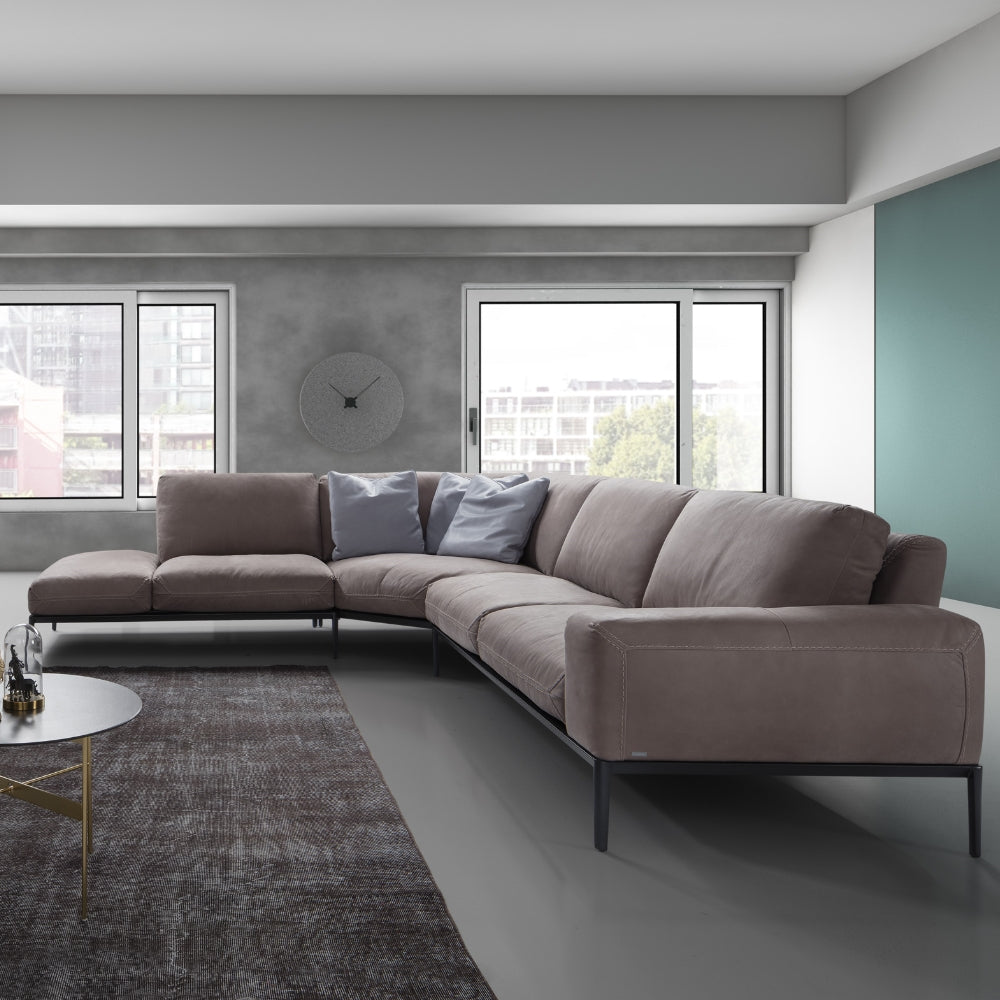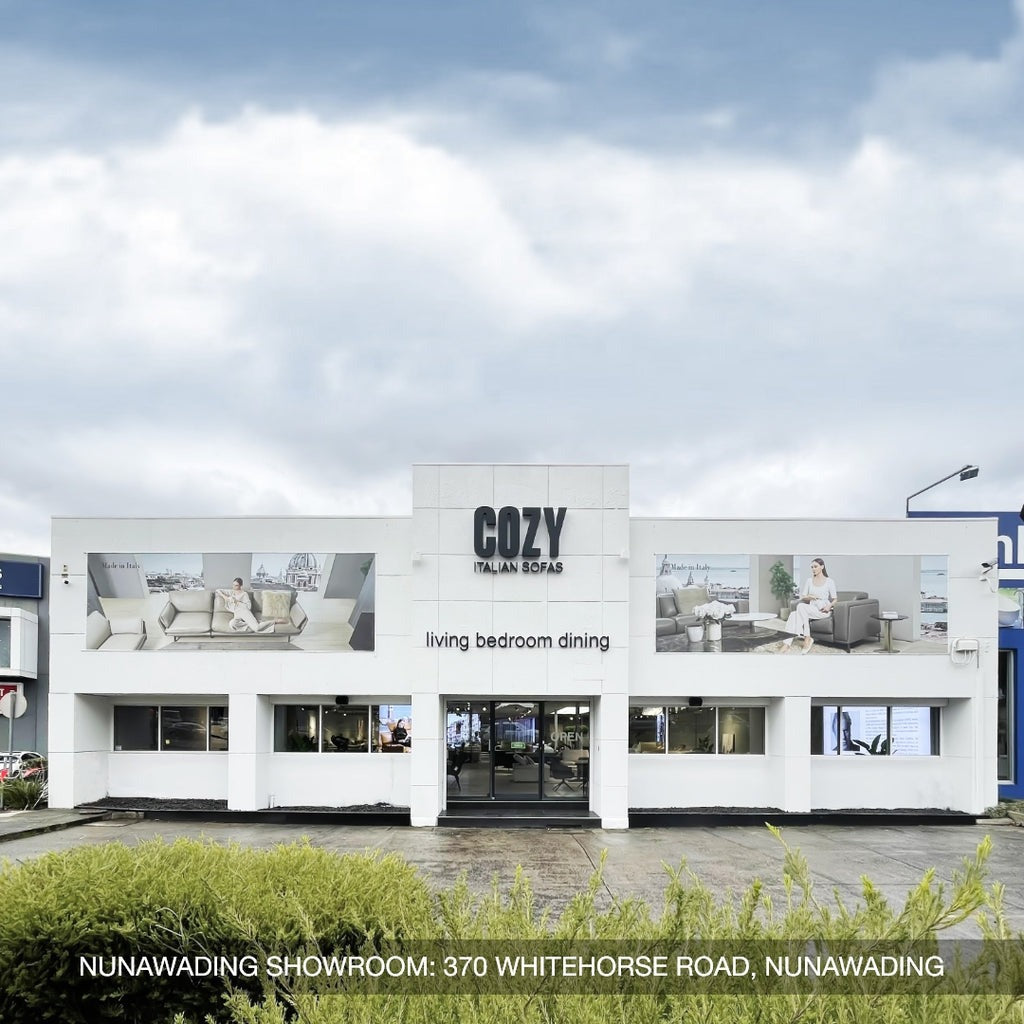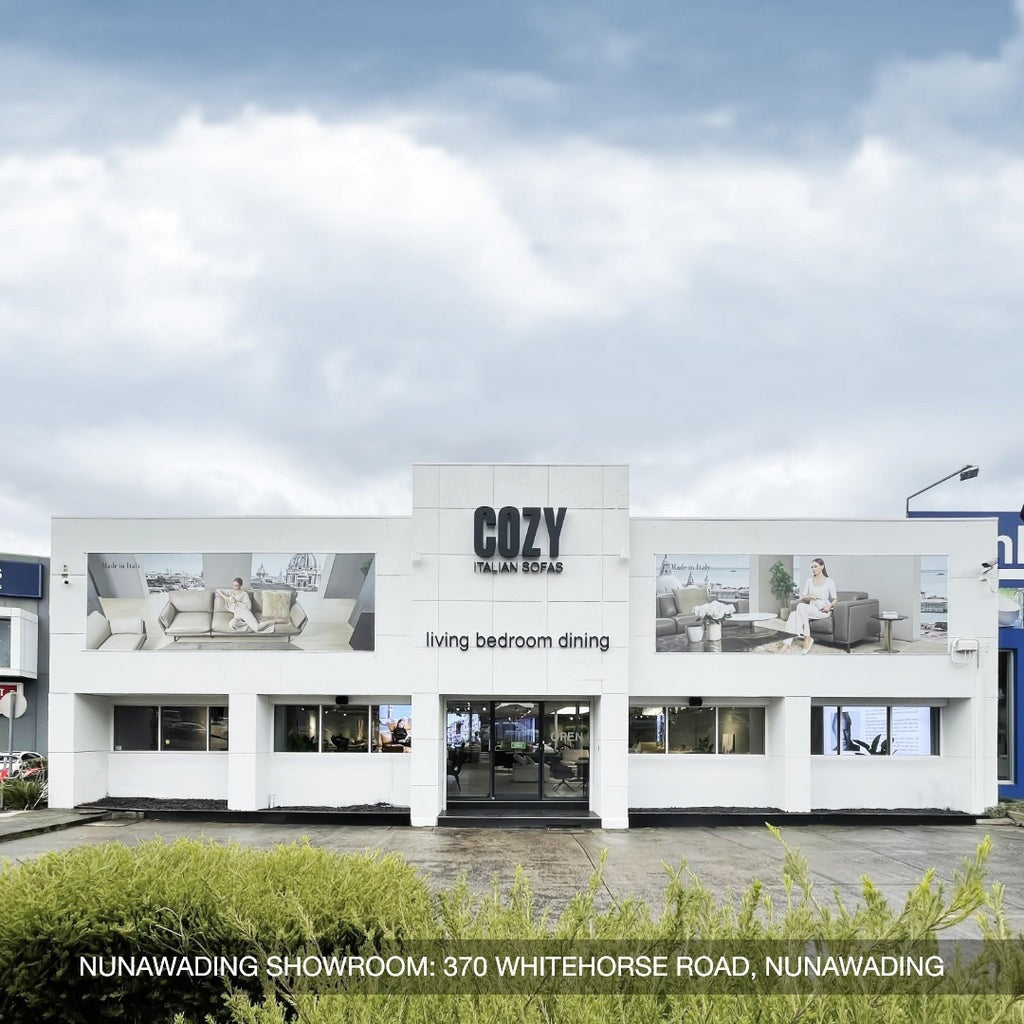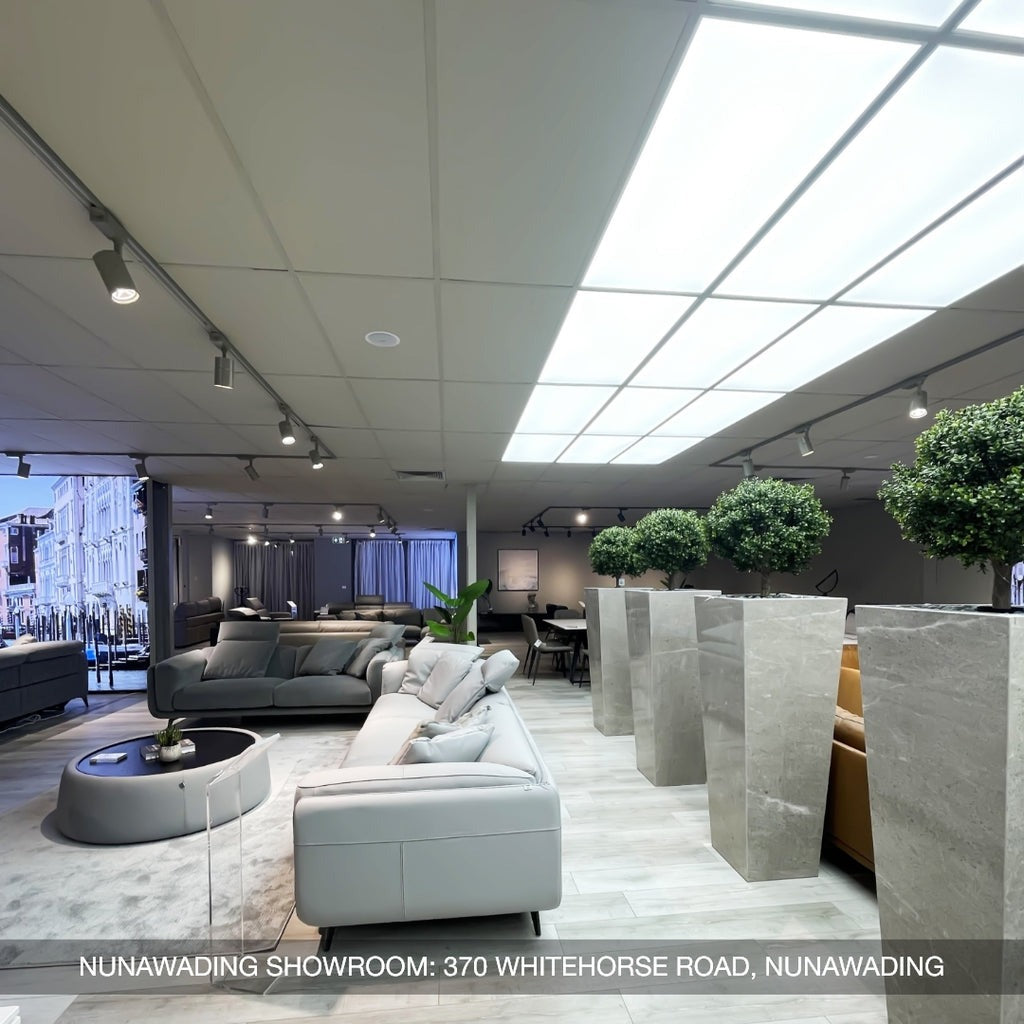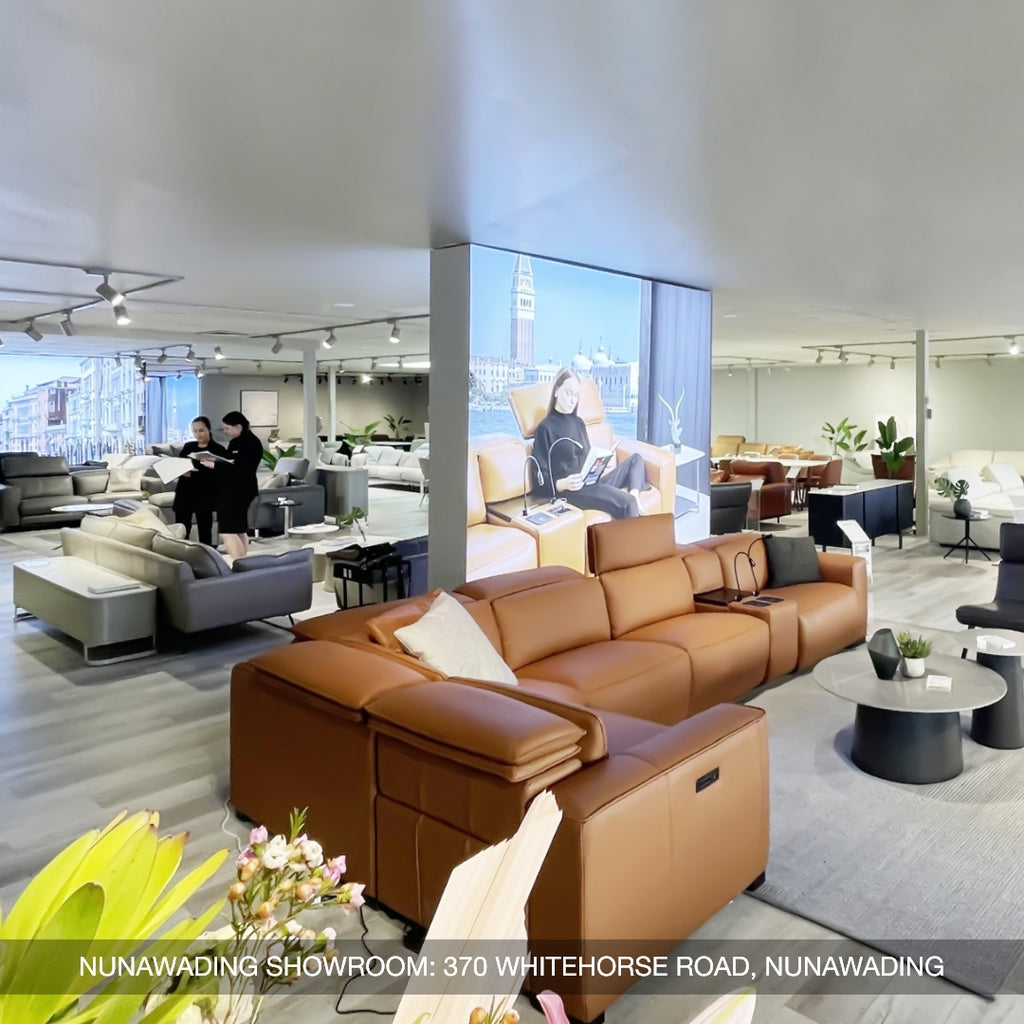Sunlight can be both a blessing and a bane for home furnishings, especially when it comes to leather sofas. Understanding how to protect leather from sun exposure is essential for maintaining the beauty and longevity of these luxurious pieces. Many homeowners often ask, does sunlight damage leather furniture, and the answer is a resounding yes. Prolonged exposure to ultraviolet (UV) rays can cause leather to fade, dry out, and lose its suppleness over time. This makes investing in effective leather UV protection strategies crucial for preserving the integrity and appearance of your leather sofas. In this article, COZY will point out the various impacts of sunlight on leather, and provide practical tips and solutions on how to protect leather from sun exposure.
Effects of Sunlight on Leather Sofas
Sunlight, while essential for creating a warm and inviting atmosphere in your living space, can have detrimental effects on leather sofas over time. Prolonged exposure to UV rays not only accelerates the deterioration process but also necessitates repairing sun damage to restore the sofa's original appearance and feel.
Fading
Semi-aniline and aniline leathers are prized for their natural look and feel, as they retain the inherent characteristics of the animal hide. However, the absence of a robust protective topcoat makes these types of leather more susceptible to fading. This rapid fading not only diminishes the aesthetic appeal but also indicates deeper structural changes within the leather fibers.
In contrast, fully-finished leathers undergo an additional coating process that enhances their resistance to UV damage. This protective layer acts as a barrier, reducing the penetration of harmful rays and minimizing color loss. This makes them a preferable choice for furniture placed in sunlit areas.
The proximity of a leather sofa to direct sunlight is a critical factor in the rate of fading. Sofas positioned near large windows or under skylights are particularly vulnerable, with visible fading occurring in as little as four to six months. Environmental factors such as geographic location, seasonal variations, and the angle of sunlight further influence the severity of fading. For instance, leather furniture in southern regions with intense sunlight may experience accelerated fading compared to those in northern climates with milder exposure.
Drying and Cracking
Leather inherently contains oils that maintain its suppleness and resilience. However, UV radiation from sunlight expedites the evaporation of these essential oils, resulting in a dry and brittle surface. Cracks not only mar the appearance of the sofa but also weaken the material, making it less comfortable and more prone to further damage.
Unlike fading, which can be somewhat mitigated with protective finishes, drying affects all leather types uniformly. Whether the leather is semi-aniline, aniline, or fully-finished, prolonged dryness leads to irreversible damage. Attempts to rehydrate dried leather often fall short, as the structural changes at the molecular level prevent the leather from regaining its original flexibility. This underscores the importance of seasonal protection strategies and regular maintenance to preserve the moisture balance within the leather.

This drying not only detracts from the sofa's appearance by causing cracks but also compromises the material’s integrity, making it less comfortable and more susceptible to additional damage.
Preventive Measures
Implementing effective premium leather protection strategies not only preserves the aesthetic appeal of your sofas but also enhances their durability features.
Placement
Positioning your leather sofas away from direct sunlight is one of the most effective ways to reduce UV damage. Direct exposure to sunlight accelerates the fading and drying of leather, leading to a loss of color and suppleness.
When arranging your living room, consider placing leather sofas in areas that receive indirect light. For instance, situating the furniture perpendicular to windows rather than directly facing them can significantly reduce sun exposure. Additionally, using furniture risers or positioning pieces away from large windows can help mitigate the intensity of sunlight that reaches the leather surfaces.
Employing curtains, blinds, or UV-blocking window films during peak sunlight hours (typically between 10 AM and 4 PM) can greatly diminish the amount of UV radiation that penetrates your windows. Light-colored or reflective window treatments are particularly effective as they absorb less heat and reflect more sunlight.
Window Treatments
UV-filtering window films are designed to block up to 99% of harmful ultraviolet rays, significantly reducing the risk of material fading and drying of leather furniture. These films not only protect your leather sofas but also contribute to maintaining a comfortable indoor temperature by minimizing heat gain. Similarly, light-colored curtains or blinds reflect more sunlight and absorb less heat compared to dark-colored alternatives, further safeguarding your leather against UV damage and enhancing color preservation techniques.
Dark-colored window treatments tend to absorb more heat and UV rays, which can exacerbate the deterioration of leather furniture. To maximize leather UV protection and maintain the durability features of your sofas, it is advisable to opt for light or neutral tones in curtains and blinds.
Regular Maintenance
Every three to four months, gently clean your leather sofas to remove dust, dirt, and other contaminants that can contribute to wear and tear. Following the cleaning process, apply a high-quality leather conditioner to replenish lost oils and maintain the leather’s natural flexibility.
Investing in premium leather care products is crucial for effective maintenance and leather UV protection. Additionally, using UV-protective sprays specifically formulated for leather can provide an extra layer of defense against sunlight-induced damage.

Light-colored curtains or blinds reflect more sunlight and absorb less heat compared to darker alternatives, further protecting your leather from UV damage and aiding in color preservation.
Care Techniques for Sun-Damaged Leather
Despite the best preventive measures, sun damage can still occur to leather sofas. Implementing effective care techniques for sun-damaged leather can help reverse some of the damage and prolong the life of your leather sofas.
Cleaning
Begin by vacuuming the leather sofa using a soft brush attachment to remove loose dirt and debris. Next, use a damp, microfiber cloth to gently wipe the surface, ensuring that you do not saturate the leather with water. Avoid using harsh chemicals or abrasive cleaners, as they can exacerbate the damage. Instead, opt for pH-balanced leather cleaners that are specifically formulated to clean without stripping essential oils from the leather.
Conditioning
Apply a high-quality leather conditioner evenly across the entire surface of the sofa using a soft cloth. Focus on areas that appear particularly dry or stiff. The conditioner helps to replenish lost oils, restoring the leather’s natural suppleness and preventing further cracking. For best results, allow the conditioner to penetrate the leather for at least 20 minutes before buffing off any excess with a clean, dry cloth.
To ensure effective conditioning, apply the product in small, circular motions, covering one section of the sofa at a time. This method promotes even distribution and thorough absorption. Avoid over-conditioning, as excess product can attract dirt and cause the leather to become sticky. Regular conditioning, in line with your maintenance schedule, supports ongoing color preservation techniques and enhances the durability features of the leather.
Color Restoration
Color restoration can be approached in two primary ways: DIY dyeing or seeking professional restoration services. DIY dyeing kits allow you to match and apply color to specific areas, offering a cost-effective solution for minor fading. However, achieving a uniform finish can be challenging without experience. Professional restoration services, on the other hand, provide expert color matching and application, ensuring a seamless and long-lasting restoration. Professionals use specialized dyes and techniques that penetrate deeply into the leather, restoring its original hue and enhancing its appearance.
While DIY color restoration can be tempting, improper techniques or incorrect dye selection can lead to uneven coloration, streaks, or additional damage to the leather. You should follow product instructions meticulously and conduct a patch test on a hidden area before full application. If you are unsure about the process or the extent of the damage, consulting with a professional leather restoration specialist is advisable to prevent exacerbating the issue and to achieve the best possible results.
Protecting your leather sofas from the harsh effects of sunlight is essential for preventing material fading and ensuring long-lasting beauty. At COZY, we understand the importance of both style and durability. Our premium leather sofas are designed with built-in leather UV protection and superior craftsmanship to withstand everyday use. Invest in a COZY leather sofa today and enjoy timeless elegance and comfort in your home for years to come.

